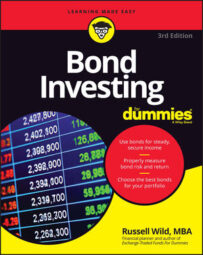If a company starts to go through hard times, any proceeds from the business or (in the case of an actual bankruptcy) from the sale of assets go to you before they go to shareholders.
However, bonds offer no ironclad guarantees. All investments carry some risk, such as tax risk. When comparing taxable bonds to other investments, such as stocks, some investors forget to factor in the potentially high cost of taxation.
Except for municipal bonds and bonds kept in tax-advantaged accounts, such as an IRA, the interest payments on bonds are generally taxable at your income-tax rate, which for most people is in the 25 to 28 percent range but could be as high as 35 percent . . . and, depending on the whims of Congress, may rise higher.
In contrast, stocks may pay dividends, most of which (thanks to favorable tax treatment enacted into law just a few years back) are taxable at 15 percent. If the price of the stock appreciates, that appreciation isn’t taxable at all unless the stock is actually sold, at which point, it’s usually taxed at 15 percent.
So would you rather have a stock that returns 5 percent a year or a bond that returns 5 percent a year? From strictly a tax vantage point, bonds lose. Paying even 25 percent tax represents a 67 percent bigger tax bite than paying 15 percent. (Of course — getting back to the whims of Congress — these special rates are also subject to change.)
Tax risk on bonds is most pronounced during times of high interest rates and high inflation. If, for example, the inflation rate is 3 percent, and your bonds are paying 3 percent, you are just about breaking even on your investment. You have to pay taxes on the 3 percent interest, so you actually fall a bit behind.
But suppose that the inflation rate were 6 percent and your bonds were paying 6 percent. You have to pay twice as much tax as if your interest rate were 3 percent (and possibly even more than twice the tax, if your interest payments bump you into a higher tax bracket), which means you fall even further behind.Inflation is not likely to go to 6 percent. But if it does, holders of conventional (non-inflation-adjusted) bonds may not be happy campers, especially after April 15 rolls around.

